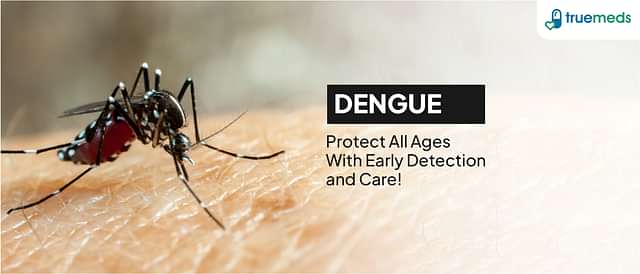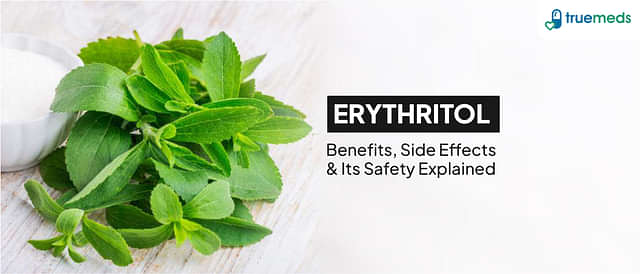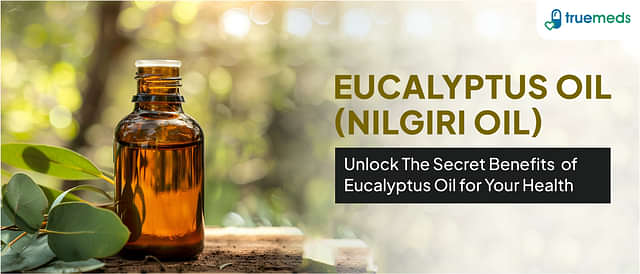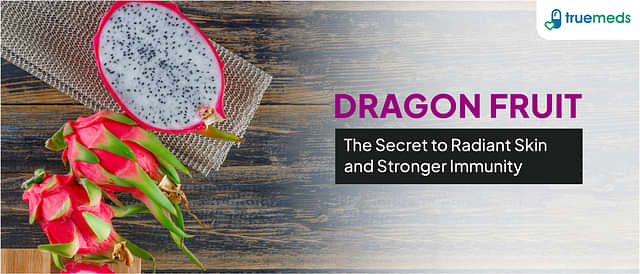What You Should Know About Types and Degrees of Burns
Last updated on : 18 Mar, 2025
Read time : 9 min
Introduction
Burns are injuries to the skin and underlying tissues caused by exposure to heat, cold, electricity, chemicals, or radiation. The severity of a burn depends on its depth and the extent of damage to the skin and underlying structures. Understanding the different types and degrees of burns is essential for providing appropriate treatment and managing potential complications. In this article, we will explore the various degrees and types of burns to help you recognise and respond to these injuries effectively.
Types of Burns Based on Severity
Burns are classified into four main degrees based on their depth and the extent of damage they cause to the skin and underlying tissues. Each degree of burn presents with distinct characteristics and requires specific treatment approaches. Let’s take a closer look at each type of burn.
1. First-Degree Burns (Superficial Burns)
First-degree burns, also known as superficial burns, affect only the outer layer of the skin, called the epidermis. These burns are typically caused by brief exposure to hot liquids, steam, or sunlight. The affected skin appears red, dry, and painful, but no blisters are present. Mild sunburn is a common example of a first-degree burn.
2. Second-Degree Burns (Partial Thickness Burns)
Second-degree burns involve damage to the epidermis and the layer beneath the epidermis. These burns are often caused by exposure to hot liquids, flames, or prolonged contact with hot objects. The affected skin appears red, blistered, swollen, and painful. It may also have a shiny or wet appearance due to the exposure of the dermis.
3. Third-Degree Burns (Full Thickness Burns)
Third-degree burns, or full-thickness burns, destroy all layers of the skin, including the epidermis and the entire dermis. These burns may also extend into the subcutaneous tissue beneath the skin. Third-degree burns are usually caused by prolonged flame exposure, scalding liquids, or electrical currents. The burn site may appear white, blackened, charred, or leathery, with the colour varying depending on the person’s skin tone.
4. Fourth-Degree Burns (Deep Burns)
Fourth-degree burns are the most severe type of burn, extending through all layers of the skin and into deeper tissues, such as muscles, bones, and tendons. These burns are often caused by prolonged exposure to flames, chemicals, or high-voltage electrical currents. The burn area may appear charred, black, or white, with no sensation due to the destruction of nerve endings.
Types of Burns Based on Cause
Burns can be classified into various types based on their cause. The most common types include thermal burns, chemical burns, electrical burns, radiation burns, and friction burns. Each type of burn has its unique characteristics and requires specific treatment approaches.
1. Thermal Burns
Thermal burns are caused by direct or indirect contact with heat sources such as fire, hot liquids, steam, or hot surfaces. These burns can result from various scenarios, including scalding from boiling water, contact with hot metals, or flame exposure from matches, candles, or lighters. Thermal burns are among the most common types of burns and can range from mild to severe, depending on the extent of the damage.
2. Chemical Burns
Chemical burns occur when the skin comes into contact with strong acids, solvents, or detergents. These substances can penetrate deep into the skin, causing significant damage that may not be immediately apparent. Chemical burns require immediate medical attention because they can affect the inside of the body, even if the external skin damage appears minor.
3. Electrical Burns
Electrical burns are caused by contact with an electrical current. These burns can be particularly dangerous because the external damage may not reflect the extent of the internal injury. The electrical current can pass through the body, causing damage to internal tissues and organs, making these burns potentially life-threatening. It is essential to ensure that the source of the electrical current is disconnected before attempting to help the victim. Electrical burns often require specialised treatment and monitoring in a hospital setting.
4. Radiation Burns
Radiation burns are caused by exposure to radiation, such as ultraviolet (UV) rays from the sun, X-rays, or radiation therapy used in cancer treatment. Sunburn is a common example of a radiation burn, which affects the outer layer of the skin. Prolonged exposure to UV radiation can lead to more severe burns and increase the risk of skin cancer. It is important to protect the skin from harmful radiation by using sunscreen, wearing protective clothing, and limiting exposure to radiation sources.
5. Friction Burns
Friction burns or abrasions occur when a hard object rubs off some of the skin. This type of burn combines an abrasion and a heat burn, as the friction can generate heat. Common examples include carpet burns and burns from motorcycle or bike accidents. Friction burns can be painful and may require careful cleaning and dressing to prevent infection. In some cases, friction burns may be deep enough to require medical attention.
Symptoms of Burns
The symptoms of burns can vary depending on the degree of the burn.
- First-degree: Redness, pain, mild swelling, no blisters.
- Second-degree: Redness, blisters, swelling, pain.
- Third-degree: White, blackened, or charred skin, possible loss of sensation.
- Fourth-degree: White or charred skin, no sensation due to nerve damage.
Common symptoms across burns include pain, redness, and swelling. Severe burns may lead to complications like infection, scarring, organ damage, breathing difficulties, and loss of function in sensitive areas.
When to Seek Medical Help for Burns?
Seeking medical attention for burns is essential to prevent complications and ensure proper healing.
- Burn larger than the person’s hand
- Burn on sensitive areas (face, neck, hands, feet, joints, genitals)
- White or charred appearance (third or fourth-degree burn)
- Chemical or electrical burns
- Burn leaking fluid or with a foul odour
- Children under 10, older adults, or those with chronic conditions
- Signs of shock or smoke inhalation
Burn Treatment and First Aid
Immediate, proper burn care can reduce injury severity and prevent complications. Follow these steps for safe and effective burn treatment:
- Stop the burn source; extinguish flames with water or a blanket.
- Remove nearby clothing/jewellery (do not remove items stuck to the skin).
- Cool the burn with cool/lukewarm water for 20 minutes; avoid ice or creams.
- Keep the person warm with a blanket, avoiding the burn area.
- Cover the burn with cling film or a clear plastic bag (for hands).
- Use over-the-counter pain relievers; consult a doctor if the pain persists.
Burn Complications
Burns can cause local and systemic complications, impacting recovery and overall health. Systemic issues include burn shock, infections leading to sepsis, respiratory injuries, and gastrointestinal, endocrine, or electrolyte imbalances.
Local complications:
- Scarring and contractures affecting joint mobility
- Local infections from burst blisters if unclean
- Heat-related conditions (heat exhaustion, heatstroke)
- Preventing burns is essential to avoid these serious, long-term impacts.
Prevention Tips to Avoid Burns
To prevent burns and their associated complications, follow these safety tips:
- General: Ensure electrical safety; use tamper-resistant outlets and protective gear with chemicals/electrical equipment.
- Kitchen: Keep children away from cooking areas; use oven mitts for hot items.
- Fire Safety: Install smoke detectors; have a practised family escape plan.
- Chemical Safety: Use protective gear and ventilate when handling chemicals.
- Sun Protection: Apply high-SPF sunscreen regularly outdoors.
Following these tips reduces the risk of burns and complications.
Conclusion
Burns are a serious injury that can have far-reaching consequences, both in the short and long term. Understanding the different types and degrees of burns, as well as the potential complications and prevention strategies, is essential for protecting yourself and your loved ones. If you or someone you know experiences a burn, it is crucial to seek medical attention promptly, as the severity of the burn may not be immediately apparent. With proper treatment and care, most burns can heal without significant long-term effects.
Frequently Asked Questions (FAQs)
First-degree burns cause red, non-blistered skin, mild pain, and swelling. Second-degree burns result in blisters, red or white skin, severe pain, and possible scarring. Third-degree burns create leathery, discoloured skin with little or no pain due to nerve destruction. Fourth-degree burns extend beyond the skin into tendons and bones, causing severe scarring and contracture.
Burns are classified by degree: first-degree, second-degree, third-degree, and fourth-degree.
First aid involves cooling the burn with cool water, removing clothing and jewellery, applying a sterile bandage, and seeking medical help for severe burns. Avoid using ice, cotton balls, butter, or eggs.
The rule of nines estimates burn area by dividing the body into sections, each approximately 9% of the total surface area.
Burns can be caused by heat (thermal), chemicals, electricity, radiation, or sunlight. Specific types include scalds, fires, electrical burns, and chemical burns.
Burn extent is estimated using the rule of nines or the Lund-Browder chart, which assesses the percentage of body surface area affected by the burn.
For minor burns, a topical antibiotic ointment such as bacitracin or Neosporin can be used to prevent infection. For severe burns, medical advice is necessary before applying any ointment.
Avoid unattended cooking, keep hot items out of reach, use protective gear, and ensure fire safety.
The seven causes of burns are thermal burns, radiation burns, chemical burns, electrical burns, friction burns, cold burns (frostbite), and sunburns.
Safety procedures include having a fire escape plan, using fire alarms, keeping flammable materials away from heat sources, supervising children around heat, and knowing first aid for burns.
References
- https://www.nationwidechildrens.org/conditions/health-library/classification-of-burns
- https://www.urmc.rochester.edu/encyclopedia/content.aspx?ContentID=P09575&ContentTypeID=90
- https://medlineplus.gov/ency/article/000030.htm
- https://stanfordhealthcare.org/medical-conditions/skin-hair-and-nails/burns/stages.html
- https://www.ncbi.nlm.nih.gov/books/NBK539773/
Disclaimer
Our healthcare experts have carefully reviewed and compiled the information presented here to ensure accuracy and trustworthiness. It is important to note that this information serves as a general overview of the topic and is for informational purposes only. It is not intended to diagnose, prevent, or cure any health problem. This page does not establish a doctor-patient relationship, nor does it replace the advice or consultation of a registered medical practitioner. We recommend seeking guidance from your registered medical practitioner for any questions or concerns regarding your medical condition.
Popular Articles
Recommended Articles
Recent Articles
Top-Selling Medicines:
...View more
Top-Selling OTC:
...View more
Company
About UsHealth ArticleHealth StoriesDiseases & Health ConditionsAll MedicinesAll BrandsNeed HelpFAQSubscribe
Registered Office Address
Grievance Officer
Download Truemeds

Contact Us
Our customer representative team is available 7 days a week from 9 am - 9 pm.
v3.7.10
Our Payment Partners



























































